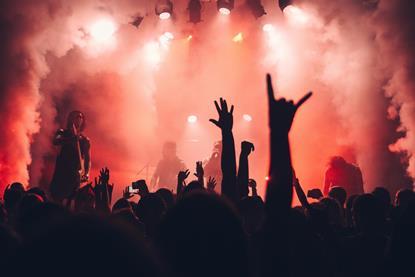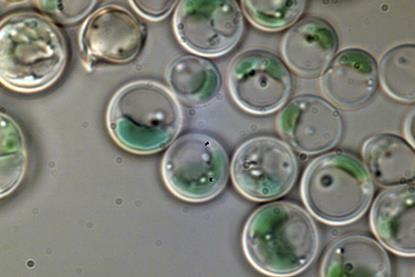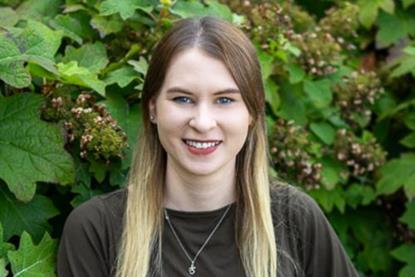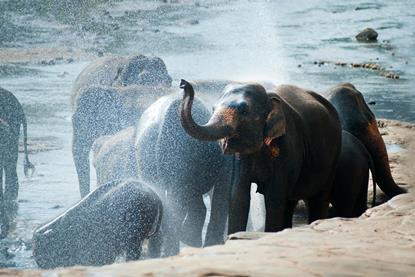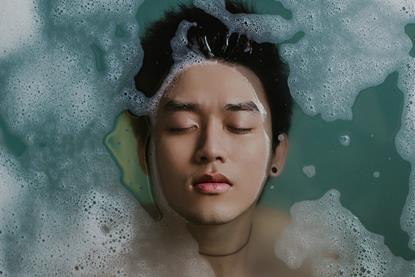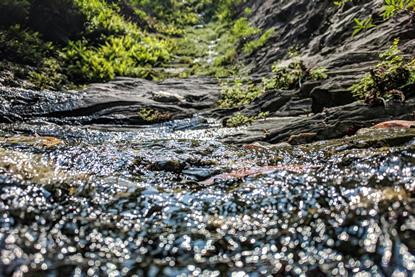Clean water
UNICEF estimates that over 2.2 billion people worldwide do not have access to clean drinking water. Micro-organisms are responsible for a host of waterborne diseases, but simultaneously offer solutions in purifying water and improving sanitation. Biofertilizers offer promising solutions for reduced nutrient runoff and wastewater recycling. As well as applying microbes to combat the problem, applied microbiologists can use their knowledge of health and disease to reduce cases of waterborne disease.
News
Persistent antibiotic resistance of cholera-causing bacteria in Africa revealed
In 2024, representatives from 14 African countries came together for a five-day intensive workshop on a whole-genome sequencing method called Oxford Nanopore Technology (ONT) aimed at strengthening cholera surveillance capabilities across the continent.
Read story- News
New review reveals how microbial communities accelerate the global spread of antibiotic resistance
A new scientific review has uncovered how complex microbial communities, including those in the human gut and the natural environment, act as powerful engines that drive the evolution and spread of antimicrobial resistance.
- News
Study suggests that chlorine treatment may impact the risk of legionnaires’ disease
Preliminary results of a nationwide study suggest that the disinfectant used to treat water before it is distributed through pipes may impact the incidence of Legionnaire’s disease in certain parts of the country.
- News
Previously unrecognized pathway in plants and phytoplankton offers mercury-detox powers
Primary producers—including phytoplankton—possess a previously overlooked ability to internally break down and detoxify methylmercury. The demethylation pathway rapidly converts methylmercury into less toxic inorganic mercury, which is subsequently reduced to gaseous Hg⁰.
More Clean water
Careers
AMR in aquatic ecosystems: A One Health investigation in an irrigation dam in Thailand
Dr Kwanrawee Joy Sirikanchana outlines how her team has launched a major project to address an overlooked question: How much does aquaculture contribute to AMR in shared water systems, and what does this mean for people, animals, and wildlife living around them?
More clean water
- News
Pathogens are the biggest threats at festivals and mass gatherings
A comprehensive review led by public health experts reveals that infectious disease outbreaks and foodborne illnesses are the most common public health threats at youth-focused mass gatherings, ranging from music festivals and cultural celebrations to sporting and religious gatherings.
- News
Groundbreaking technique unlocks secrets of bacterial shape-shifting
Scientists have long known that bacteria come in many shapes and sizes, but understanding what those differences mean has remained a major challenge, especially for species that can’t be grown in the lab. A groundbreaking method could change how researchers study bacterial diversity.
- News
Researchers discover latent antimicrobial resistance across the world
A team of researchers has discovered that latent antimicrobial resistance is more widespread across the world than known resistance. They call for broader surveillance of resistance in wastewater.
- News
Microalgae could play key role in bio-based circular economy
With food systems under pressure from climate change, geopolitical instability, and supply chain vulnerabilities, the EU is driving innovation toward more sustainable, resilient, and local production models. Microalgae have emerged as a promising resource for producing ingredients across food, feed, and other consumer goods.
- News
How reactive oxygen species target viruses differently: new clues for safer water disinfection
A new study systematically explored how reactive oxygen species (ROS) inactivate viruses with distinct structures. The results revealed clear heterogeneity: enveloped RNA viruses were most susceptible to oxidation, while double-stranded DNA viruses showed strong resistance.
- News
New global guidelines streamline environmental microbiome research
A team of nearly 250 researchers from 28 countries has developed a new set of reporting guidelines for environmental microbiomes called STREAMS. The guidelines are organized by the structure of a scientific manuscript and help ensure that important details aren’t overlooked.
- News
Earthquakes shake up Yellowstone’s subterranean ecosystems
Researchers chronicled the ecological changes in subsurface microbial communities that took place after a swarm of small earthquakes rattled the Yellowstone Plateau Volcanic Field in 2021.
- News
Microplastics pose a human health risk in more ways than one
A new study shows that microplastics in the natural environment are colonised by pathogenic and antimicrobial resistant bacteria. The study team calls for urgent action for waste management and strongly recommends wearing gloves when taking part in beach cleans.
- News
New study reveals how a common antibiotic disrupts nitrogen cycling and boosts greenhouse gas emissions in estuaries
Antibiotics may have far reaching impacts on wetland chemistry, according to a new study that identifies the bacteria responsible for breaking down the antibiotic sulfamethoxazole and links this process to increased emissions of nitrous oxide, a potent greenhouse gas.
- News
Dr José Luis Balcazar named as winner of John Snow Public Health Innovation Prize
Dr José Luis Balcazar, Senior researcher at the Catalan Institute for Water Research (ICRA-CERCA), Spain, has been named as the newest winner of the John Snow Public Health Innovation Prize.
- News
Global Virus Network awards pandemic preparedness grants to advance global surveillance and early detection of viral threats
The Global Virus Network (GVN) is awarding pandemic preparedness research grants, totaling $160,000, to scientists across four continents, supporting innovative, investigator-led projects designed to enhance viral surveillance, early detection, and scientific preparedness.
- News
New study finds higher levels of antimicrobial resistance (AMR) in surface water during winter
A new study has found that the levels of antimicrobial resistance (AMR) present in surface water increase during winter. Flooding, sewer overflows and agricultural run-off all contribute to a cocktail of pollutants that can increase AMR genes in surface water, potentially turning regular bugs into ‘superbugs’.
- News
Drinking water people believe to be safe and clean often contain potentially dangerous bacteria
A study in Guatemala found the sources of drinking water people believe to be safe and clean often contain potentially dangerous bacteria. Bottled water sold in large refillable jugs was the most frequently contaminated with coliform bacteria – an indicator of fecal contamination.
- News
Green chemistry for sustainable personal care
A recent review examined microbial biosurfactants as sustainable alternatives to synthetic surfactants in shampoo formulations. The authors addressed the growing demand for environmentally friendly and dermatologically safe cleansing agents, and emphasized the need to transition from petrochemical-based ingredients such as sodium lauryl sulfate (SLS) to biodegradable biosurfactants.
- News
Wastewater from most countries favours non-resistant bacteria
Municipal wastewater contains a large range of excreted antibiotics and has therefore long been suspected to be a spawning ground for antibiotic-resistant bacteria. By testing the potential of untreated municipal wastewater from 47 countries to select for resistant E. coli, researchers show that while some samples indeed do so, most instead suppress them.
- News
Emerging pollutants threaten efficiency of wastewater treatment: New review highlights urgent research needs
A new scientific review has shed light on how emerging pollutants commonly found in wastewater are disrupting biological phosphorus removal processes, posing risks to water quality and ecological health. The study examines how pharmaceuticals, microplastics, and industrial chemicals interfere with the key microorganisms responsible for phosphorus removal in wastewater treatment plants.
- News
Microbial teamwork slashes uranium pollution in just 48 hours
A research team has developed a synthetic microbial consortium that completely reduces soluble uranium [U(VI)] to insoluble U(IV) within 48 hours, showing nearly twice the efficiency of a single-strain system. The study reveals how Shewanella oneidensis MR-1 and Pseudomonas aeruginosa LXZ1 cooperate to accelerate extracellular electron transfer (EET).
- News
Everyday levels of antibiotics in the environment may accelerate the global spread of resistance, new study finds
A new study shows that even very small amounts of antibiotics that commonly appear in soil, rivers, wastewater, and agricultural runoff may significantly accelerate the spread of antibiotic resistance genes among bacteria.





